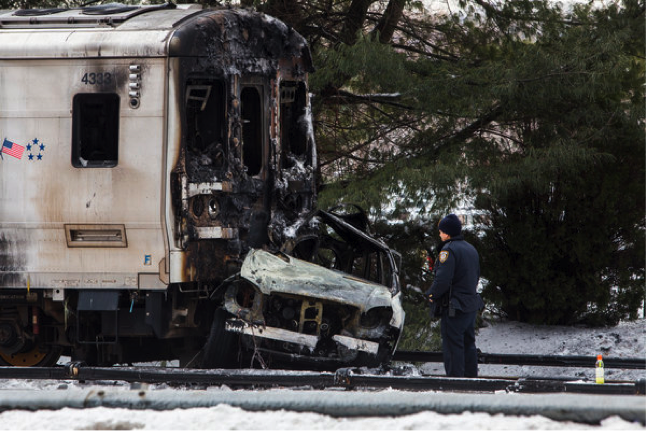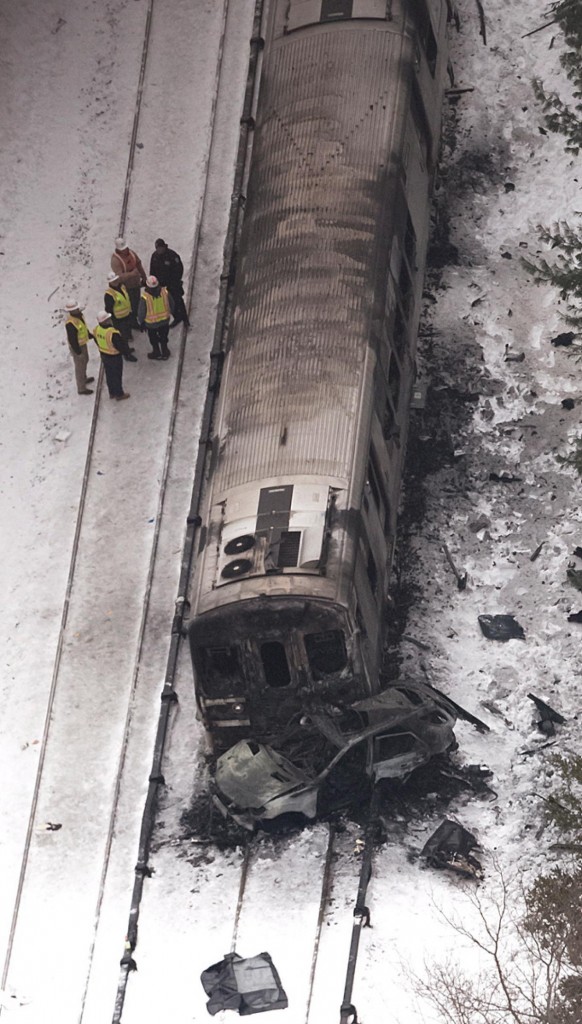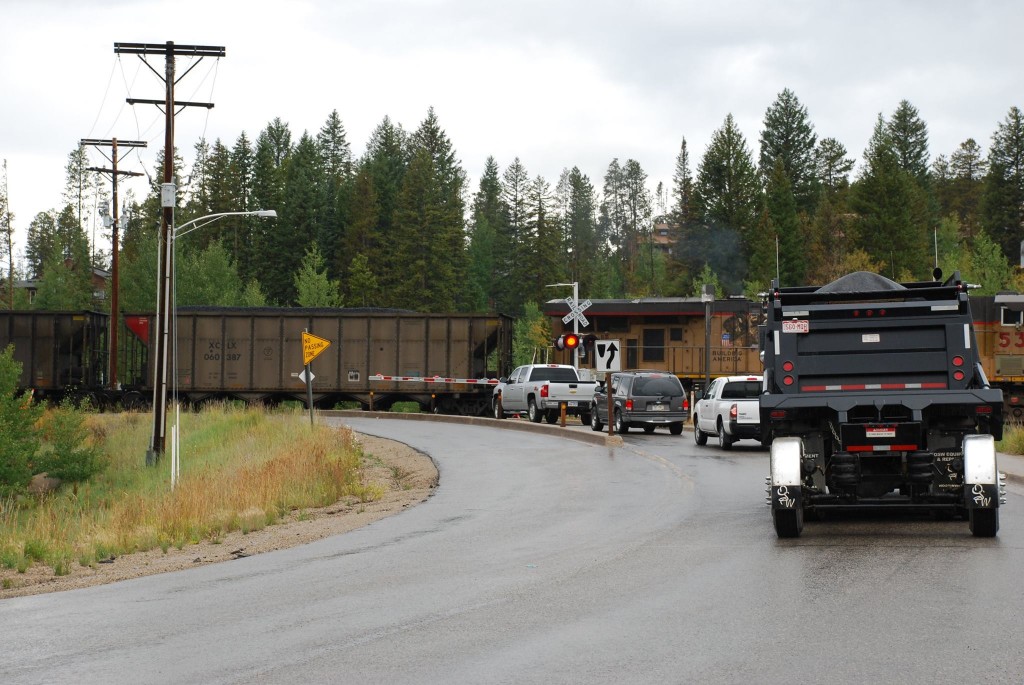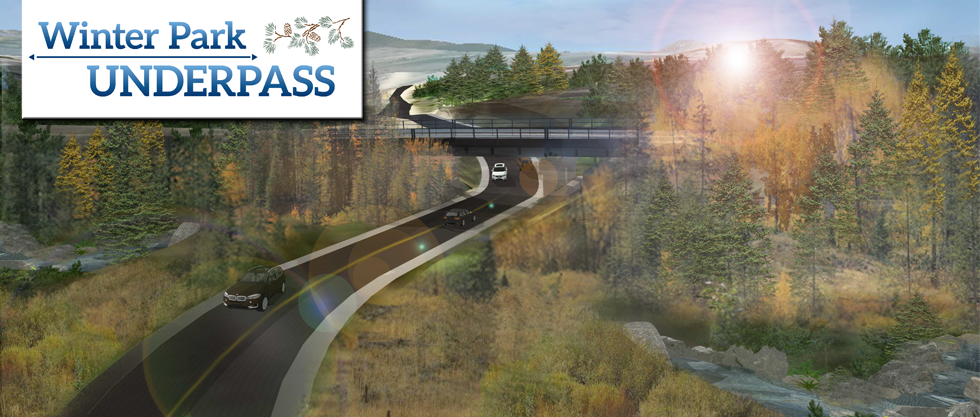Dangers of Railroad Crossings
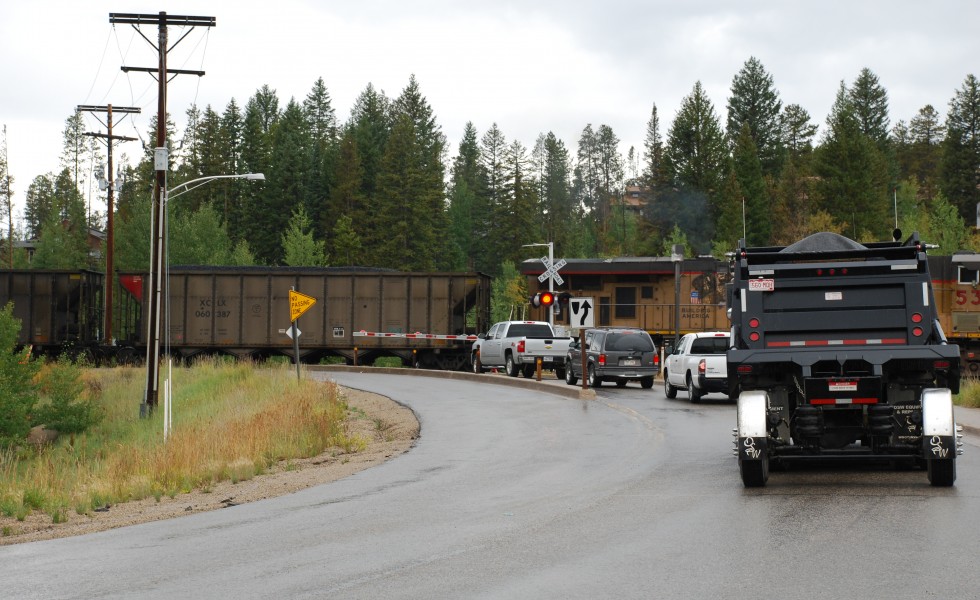
Credit: Christopher Gregory for The New York Times
Vehicle-train collisions pose a huge safety risk for passengers of trains and cars alike. Sadly, more times than not these collisions end in tragedy and effect countless lives.
We were reminded of this once more last Tuesday evening when a New York Metro-North train collided with an SUV killing the driver of the SUV, five passengers, and sending dozens of people to the hospital with serious injuries. Upon impact, the trains’ front cars began to fill with flames and smoke leading to confusion, low visibility and making it difficult for the hundreds of riders to escape the car.
While crossing guards and warning signals are designed to protect drivers and trains alike, they are not 100% effective. Furthermore, human error and behavior can play a huge factor in these accidents.
In the case of Tuesday’s Metro-North accident, witnesses reported the crossing arm went down behind the SUV. The SUV was sitting on the road in front of the train tracks but couldn’t easily reverse because of the crossing arm.
According to the New York Times story, the same witness saw the driver get out of the vehicle, walk behind the car, and try to lift the crossing arm in attempt to free the car. Finding it stuck, the driver allegedly returned to the car and drove forward on the tracks, instantly colliding with the oncoming train.
Photo: Joe Marino/New York Daily News
So what actually happened?
- Did the crossing arm malfunction?
- Did the driver panic?
- Did fear cause the driver to misjudge the situation?
- Were there other factors involved?
While we hope to better understand and learn from this situation, the danger is real and unfortunately exists at every railroad crossing.
- Three out of four crashes occur within 25 miles of a motorist’s home.
- Fifty percent of all crashes occur within five miles of home.
- A motorist is almost 20 times more likely to die in a crash involving a train than in a collision involving another motor vehicle.
- According to DOT’s Federal Railroad Administration, about 80% of railroad crossings do not have adequate warning devices.
- According to the Federal Railroad Administration Office of Safety Analysis there have been 2,674 fatalities and 23,340 injuries in the United States since 2011.
With passenger and freight trains moving through the Winter Park community daily, an underpass would alleviate the potential for a vehicle and train collision and tragedy, making the community safer for residents and visitors alike.
Crossing at Vasquez Road
 Winter Park Underpass
Winter Park Underpass